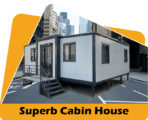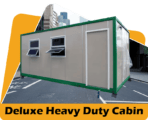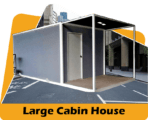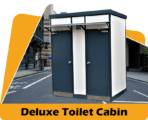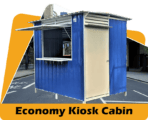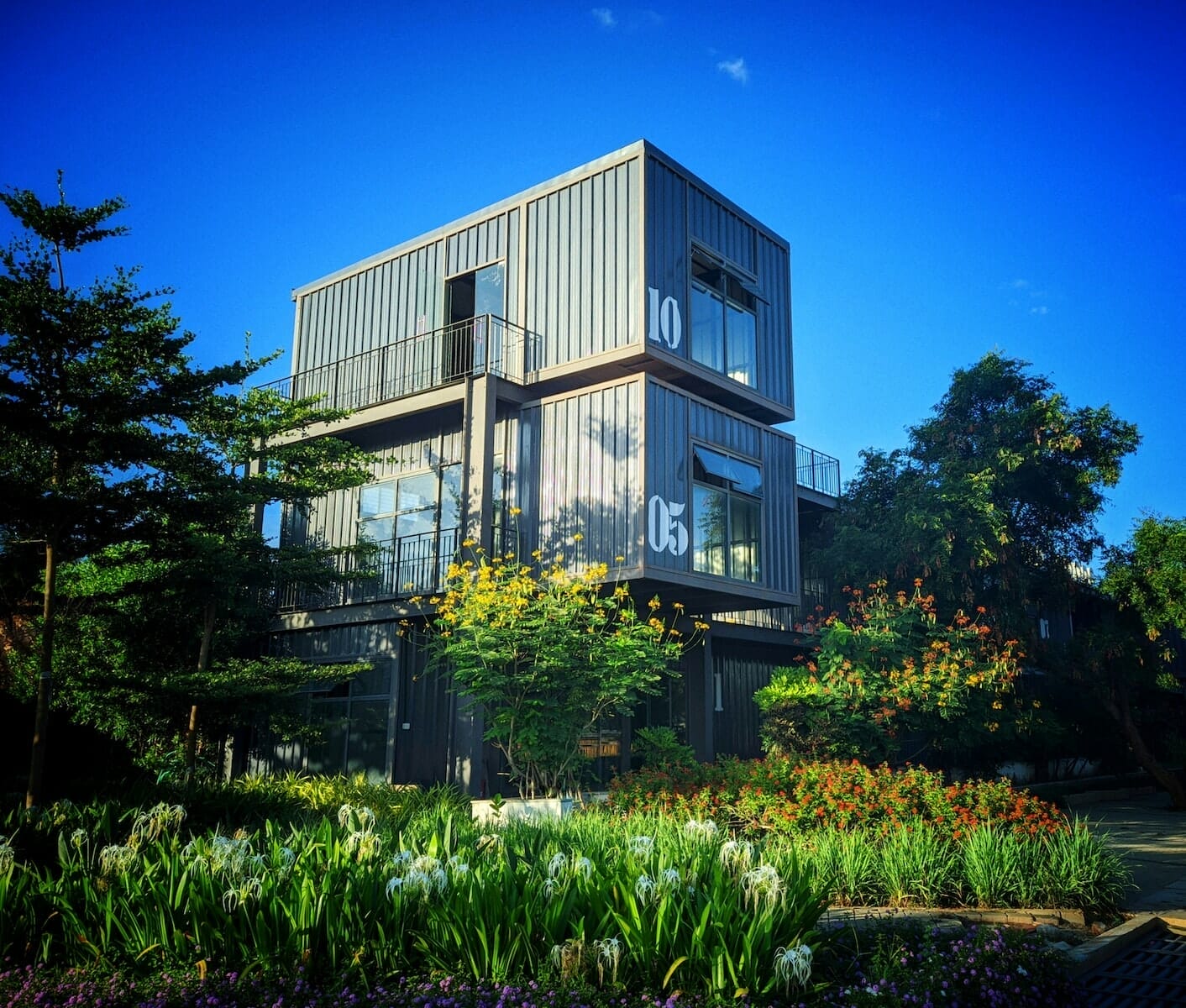
Exploring Modern Tiny House Designs: Innovative and Stylish Living
Table of Contents
- Introduction
- The Rise of Tiny Houses
- Benefits of Modern Tiny Houses
- Key Characteristics of Modern Tiny House Designs
- Compact Footprint
- Clever Storage Solutions
- Multi-purpose Furniture
- Energy Efficiency
- Innovative Tiny House Designs
- Off-Grid Living
- Floating Tiny Houses
- Mobile Tiny Homes
- Stylish Aesthetics and Interior Design
- Minimalist Approach
- Open Concept Layouts
- Natural and Sustainable Materials
- Challenges and Considerations
- Zoning Regulations
- Downsizing and Minimalistic Lifestyle
- Privacy and Personal Space
- Conclusion
- Frequently Asked Questions (FAQs)
1. Introduction
In recent years, the concept of minimalistic living has gained momentum, leading to the rise of modern tiny houses. These innovative and stylish dwellings offer a unique approach to homeownership, focusing on efficiency, functionality, and sustainability. In this comprehensive guide, we will explore the world of modern tiny house designs, covering their benefits, key characteristics, innovative designs, stylish aesthetics, challenges, and considerations. Whether you’re considering downsizing or simply intrigued by these compact homes, this article will provide valuable insights into the modern tiny house movement.
2. The Rise of Tiny Houses
Tiny houses have emerged as a popular alternative to traditional large homes. More people are embracing the idea of downsizing, simplifying their lives, and prioritizing experiences over possessions. The tiny house movement emphasizes quality over quantity, encouraging individuals to live with less and focus on what truly matters. Let’s delve into the reasons behind the rise of tiny houses and their appeal to a growing number of homeowners.
3. Benefits of Modern Tiny Houses
3.1 Affordability and Financial Freedom
One of the primary advantages of modern tiny houses is their affordability. With lower construction and maintenance costs, homeowners can achieve financial freedom, reduce debt, and allocate resources to experiences and personal goals. Tiny houses offer an opportunity to live mortgage-free or with significantly reduced housing expenses, enabling individuals to save money and pursue their dreams.
3.2 Lower Environmental Impact
Modern tiny houses have a significantly lower environmental impact compared to traditional homes. These compact dwellings require fewer building materials, consume less energy, and produce fewer carbon emissions. Many tiny house designs incorporate sustainable features such as energy-efficient appliances, solar panels, rainwater harvesting systems, and composting toilets. By embracing a tiny house lifestyle, individuals can contribute to a more sustainable future and minimize their ecological footprint.
3.3 Mobility and Flexibility
Tiny houses offer unparalleled mobility and flexibility. With their compact size and often built-on-wheels design, these homes allow individuals to embrace a nomadic lifestyle and travel while enjoying the comforts of home. Whether it’s exploring different regions or choosing a new backyard view every few months, the mobility of tiny houses offers freedom and the ability to live life on one’s terms.
4. Key Characteristics of Modern Tiny House Designs
Modern tiny houses are known for their unique features and clever design solutions. Let’s explore the key characteristics that define these innovative and space-efficient homes.
4.1 Compact Footprint
The defining feature of modern tiny houses is their small size, typically ranging from 100 to 400 square feet. Every inch of space is carefully designed and optimized to maximize functionality and comfort. Despite their compact footprint, these homes provide everything necessary for a comfortable living experience.
4.2 Clever Storage Solutions
Storage is a critical aspect of tiny house design. To make the most of limited space, modern tiny houses incorporate clever storage solutions. From built-in shelving units to hidden compartments within staircases, designers utilize every nook and cranny to create ample storage space for essentials. Innovative storage solutions allow homeowners to keep their living areas organized and clutter-free.
4.3 Multi-purpose Furniture
In a tiny house, every piece of furniture must serve multiple functions. Modern tiny house designs often feature multi-purpose furniture to maximize space utilization. Sofa beds, convertible tables, and collapsible furniture allow for seamless transitions between various living areas, providing comfort and versatility without sacrificing valuable space.
4.4 Energy Efficiency
Sustainability is a core principle of modern tiny house designs. Many tiny houses incorporate energy-efficient features to minimize their environmental impact. Solar panels, energy-efficient appliances, LED lighting, and insulation contribute to reducing energy consumption and making the homes more eco-friendly. Tiny houses often prioritize off-grid capabilities, allowing homeowners to generate their electricity and conserve resources.
5. Innovative Tiny House Designs
Tiny houses have inspired creative designers to push the boundaries and explore innovative approaches to compact living. Let’s explore some of the innovative tiny house designs that have gained popularity in recent years.
5.1 Off-Grid Living
Some modern tiny houses are designed for off-grid living, providing self-sufficiency in terms of energy, water, and waste management. These homes rely on renewable energy sources such as solar power and incorporate composting toilets and rainwater harvesting systems. Off-grid tiny houses allow individuals to disconnect from traditional infrastructure and embrace a more sustainable and independent lifestyle.
5.2 Floating Tiny Houses
For those living near water bodies or coastal regions, floating tiny houses offer a unique and enchanting living experience. These innovative dwellings combine the tranquility of living on water with the efficiency and style of modern tiny house designs. Floating tiny houses often feature sturdy and buoyant foundations, ensuring stability and comfort even in aquatic environments.
5.3 Mobile Tiny Homes
Mobile tiny homes provide the ultimate freedom to travel and explore while carrying the comforts of home. These compact dwellings are built on wheels, allowing homeowners to easily relocate and experience a nomadic lifestyle. Mobile tiny homes offer versatility, enabling individuals to embrace new opportunities, connect with nature, and discover diverse communities.
6. Stylish Aesthetics and Interior Design
Modern tiny houses are not only functional but also stylish and aesthetically pleasing. Let’s explore the design elements that contribute to the visual appeal of these innovative dwellings.
6.1 Minimalist Approach
Minimalism is a common design philosophy in modern tiny house aesthetics. Clean lines, uncluttered spaces, and simplicity are central to the minimalist approach. By focusing on essential elements and eliminating excess, tiny houses create a sense of calmness and provide a welcoming environment.
6.2 Open Concept Layouts
To create an illusion of spaciousness, modern tiny houses often incorporate open concept layouts. By removing unnecessary walls and barriers, the living area feels more expansive and allows natural light to flow freely. Open concept layouts enhance the functionality and visual appeal of tiny houses.
6.3 Natural and Sustainable Materials
Tiny house designers prioritize the use of natural and sustainable materials. From reclaimed wood to eco-friendly insulation, these choices contribute to a healthier living environment and reduce the ecological impact. Natural materials also add warmth and character to tiny house interiors, creating a cozy and inviting atmosphere.
7. Challenges and Considerations
While modern tiny houses offer numerous advantages, it’s essential to be aware of the challenges and considerations associated with this unique lifestyle. Let’s explore some of the key factors to consider when contemplating living in a tiny house.
7.1 Zoning Regulations
Zoning regulations vary from one location to another and can pose challenges for tiny house enthusiasts. It’s crucial to research and understand local regulations and building codes before embarking on a tiny house journey. Familiarizing yourself with the legal requirements will help ensure a smooth and compliant tiny house living experience.
7.2 Downsizing and Minimalistic Lifestyle
Transitioning to a tiny house requires a mindset shift and the willingness to downsize. Embracing a minimalistic lifestyle and letting go of unnecessary possessions are essential aspects of living comfortably in a tiny house. Simplifying your life and prioritizing experiences over material possessions can lead to a more fulfilling and meaningful existence.
7.3 Privacy and Personal Space
Living in a small space can present challenges related to privacy and personal space. It’s crucial to incorporate thoughtful design elements that allow for privacy without sacrificing the openness and functionality of the overall living area. Creative solutions such as sliding doors, curtains, and designated personal zones within the tiny house can help maintain a sense of privacy.
8. Conclusion
Modern tiny house designs offer an innovative and stylish solution for those seeking a more efficient and sustainable way of living. With their clever use of space, functional design, and focus on aesthetics, these compact dwellings provide a unique opportunity to live comfortably and creatively within limited square footage. From off-grid living to floating homes and mobile tiny houses, the possibilities are endless. Embracing the tiny house movement can lead to financial freedom, a reduced environmental footprint, and a more intentional and fulfilling lifestyle.
9. Frequently Asked Questions (FAQs)
Q1: Are tiny houses suitable for families?
While tiny houses are often associated with individuals or couples, they can be designed to accommodate families. Careful consideration of space utilization and smart design choices can make tiny houses functional and comfortable for families.
Q2: Can I build a tiny house on my own?
Yes, building your own tiny house is an option. However, it requires careful planning, research, and construction skills. Alternatively, you can work with professional tiny house builders to bring your vision to life.
Q3: Are tiny houses legal?
Tiny house legality varies depending on the jurisdiction and local regulations. It is essential to research and understand the zoning and building codes in your desired location before pursuing a tiny house lifestyle.
Q4: Can I connect a tiny house to public utilities?
Yes, it is possible to connect a tiny house to public utilities such as water and electricity. However, many tiny house enthusiasts choose off-grid or alternative energy solutions for a more sustainable and self-sufficient lifestyle.
Q5: Can I customize the design of a tiny house?
Absolutely! Tiny houses offer ample opportunities for customization and personalization. Whether it’s choosing the interior finishes, layout configuration, or incorporating unique features, you can tailor the design to suit your preferences and needs.
Desain Rumah Kabin
Rumah Kabin Kontena
Harga Rumah Kabin
Kos Rumah Kontena
Rumah Kabin 2 Tingkat
Rumah Kabin Panas
Rumah Kabin Murah
Sewa Rumah Kabin
Heavy Duty Cabin
Light Duty Cabin


